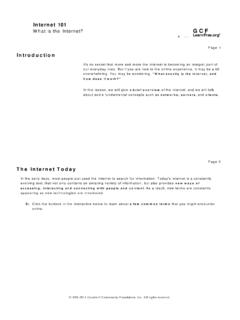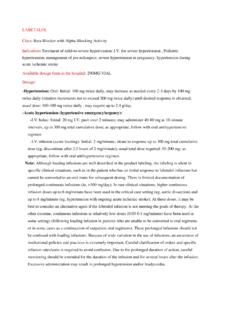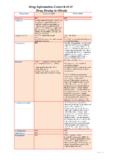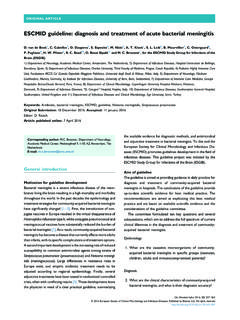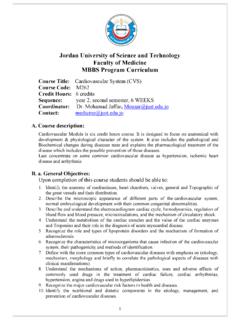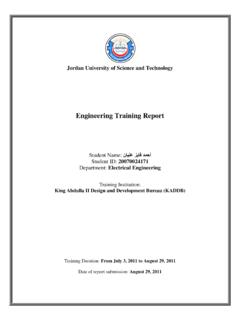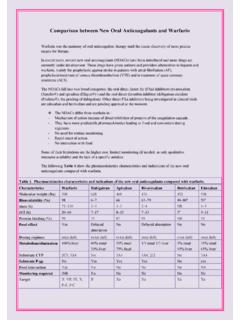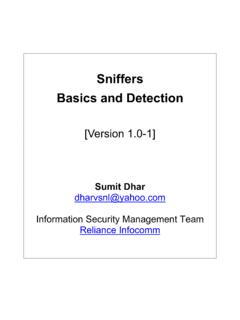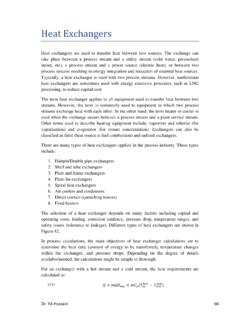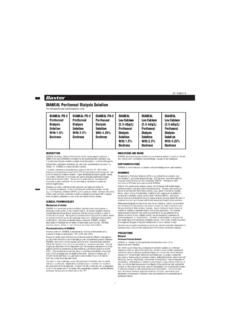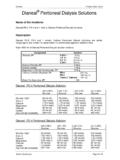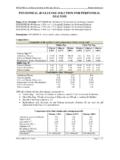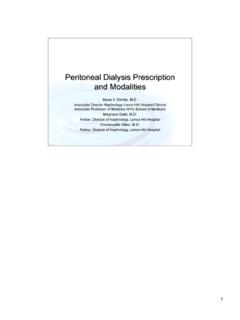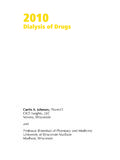Transcription of 2000 - Jordan University of Science and Technology
1 2000 dialysis of DrugsPROVIDED AS AN EDUCATIONAL SERVICE BY AMGEN dialysis of DrugsCurtis A. Johnson, PharmDMember, Board of DirectorsNephrology Pharmacy AssociatesAnn Arbor, MichiganandProfessor of Pharmacy and MedicineUniversity of Wisconsin-MadisonMadison, WisconsinWilliam D. Simmons,RPhSenior Clinical PharmacistDepartment of PharmacyUniversity of Wisconsin Hospital and ClinicsMadison, WisconsinSEE DISCLAIMER REGARDING USE OF THIS POCKET BOOKIDIALYSIS OF DRUGS4 SEE DISCLAIMER REGARDING USE OF THIS POCKET BOOKDISCLAIMER These dialysis of Drugs guidelinesare offered as a general summary of informationfor pharmacists and other medical administration of drugs may involveserious medical risks to the patient which canonly be identified by medical on the circumstances.
2 The risks can be serious and can include severe injury, including death. These guidelines cannot identifymedical risks specific to an individual patient orrecommend patient treatment. These guidelinesare not to be used as a substitute for professionaltraining. The absence of typographical errors isnot guaranteed. Use of these guidelines indicatesacknowledgement that neither NephrologyPharmacy Associates, Inc. nor Amgen Inc. will beresponsible for any loss or injury, including death, sustained in connection with or as a result of theuse of these guidelines.
3 Readers should consultthe complete information available in the packageinsert for each agent indicated before such as this one can only draw frominformation available as of the date of Nephrology Pharmacy Associates, Inc. norAmgen Inc. is under any obligation to updateinformation contained herein. Future medicaladvances or product information may affect orchange the information provided. Pharmacists andother medical professionals using these guidelinesare responsible for monitoring ongoing medicaladvances relating to 2000, Nephrology PharmacyAssociates, Inc.
4 Printed in the All rightsreserved. This material may not be published,rewritten or removal during dialysis is frequently ofinterest to those caring for patients receivinghemodialysis or peritoneal dialysis . The extentof drug dialyzability determines whether supplemental dosing is necessary during or following dialysis . The accompanying tablehas been prepared as a reference regarding the effect either form of dialysis may have on drugclearance. This table should be usedasageneral drugs included in the table are parentdrugs.
5 In some cases, these drugs are con-verted to pharmacologically active or toxicmetabolites for which little dialysis informationis known. When available, serum drug measurements may be appropriate for dosing individual patients. In all cases, patients shouldbe monitored for clinical efficacy and DeterminesDrugDialyzability?The extent to which a drug is affected by dialysis is determined primarily by severalphysicochemical characteristics of the drug,which are briefly described in the text that follows. These include molecular size, proteinbinding, volumeof distribution, water solubili-ty, and plasma clearance.
6 In addition to theseproperties of thedrug, technical aspects of thedialysis procedure may also determine theextent to which adrug is removed by DISCLAIMER REGARDING USE OF THIS POCKET BOOK5 IPREFACE6 SEE DISCLAIMER REGARDING USE OF THIS POCKET BOOKM olecular WeightDialysis is dependent upon the use of a dialyticmembrane: either a synthetic membrane with fixed pore size, as in hemodialysis, or anaturally occurring peritoneal membrane, as in peritoneal dialysis . The movement of drugsor other solutes is largely determined by thesize of these molecules in relation to the poresize of the membrane.
7 As a general rule, smaller molecular weight substances will passthrough the membrane more easily than largermolecular weight substances. Acommonassumption is that pore size of the peritonealmembrane is somewhat larger than that of thehemodialysis membrane; this would explainthe observation that larger molecular weightsubstances appear to cross the peritonealmembrane to a greater extent than they cross the hemodialysis BindingAnother important factor determining drugdialyzability is the concentration gradient ofunbound (free) drug across the dialysis membrane.
8 Drugs with a high degree of proteinbinding will have a small plasma concentrationof unbound drug available for dialysis . Uremiamay have an effect on protein binding for somedrugs. Through mechanisms not completelyunderstood, protein binding may decrease inuremic serum. Should this change in bindingbe substantial, increased dialyzability of freedrug may the primary binding proteins for mostdrugs (albumin, 1-acid glycoprotein) are oflarge molecular size, the drug-protein complexis often too large to cross the dialysis mem-brane, especially in the case of the hemodialy-sis membrane.
9 Since the peritoneal membranedoes permit the passage of some proteins, theremay be some limited drug-proteinremoval with this technique. Increased protein concentrations have been noted in peritoneal effluent during episodes of of DistributionAdrug with a large volume of distributionisdistributed widely throughout tissues andispresent in relatively small amounts in theblood. Factors that contribute to a drug havinga large volume of distribution include a highdegree of lipid solubility and low plasma protein binding. Drugs with a large volume ofdistribution are likely to be minimally SolubilityThe dialysate used for either hemodialysis orperitoneal dialysis is an aqueous solution.
10 Ingeneral, drugs with high water solubility willbedialyzed to a greater extent than those withhigh lipid solubility. Highly lipid-soluble drugstend to be distributed throughout tissues, andtherefore only a small fraction of the drug ispresent in plasma and accessible for DISCLAIMER REGARDING USE OF THIS POCKET BOOK7 IPREFACE8 SEE DISCLAIMER REGARDING USE OF THIS POCKET BOOKP lasma ClearanceThe inherent metabolic clearance the sumofrenal and nonrenal clearance of a drugisoften termed the plasma clearance of adrug. In dialysis patients, renal clearance islargely replaced by dialysate clearance.
